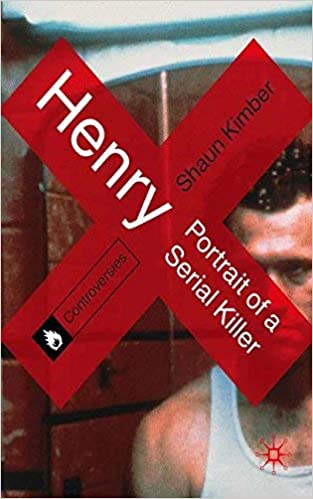 By SHAUN KIMBER (Palgrave Macmillan; 2011)
By SHAUN KIMBER (Palgrave Macmillan; 2011)
This publication deserves praise for being the first book devoted entirely to John McNaughton’s HENRY: PORTRAIT OF A SERIAL KILLER. The book was part of the UK’s Palgrave Macmillan published “Controversies” series that explored hotly contested modern films (other entries include BAD BOY BUBBY, A CLOCKWORK ORANGE, IRREVERSIBLE, BASIC INSTINCT and THE PASSION OF THE CHRIST).
Those of you who were around in the early nineties may recall the release of HENRY, a no-budgeter made for the straight-to-video horror market back in ‘86 by first-time director McNaughton. It was dumped by its initial distributors (who were expecting a conventional slasher film) and wound up getting a theatrical arthouse run in 1990, during which it was famously slapped with an NC-17 rating for “overall tone” by the MPAA. Cult status was assured, as was a serial killer movie craze that came about in no small part due to HENRY: PORTRAIT OF A SERIAL KILLER.
The book’s first portion provides a good overview of the film’s production and distribution history (also mentioned is the similarly minded 1985 STV feature CONFESSIONS OF A SERIAL KILLER, which was completely obliterated in the public consciousness by HENRY), while the second is devoted to the controversy it engendered in the UK. There HENRY’s release was delayed until 1991, when it underwent heavy re-editing at the hands of the British Board of Film Classification. Further trouble followed when it was released on VHS in 1993, at the tail end of the “video nasties” era, which saw the film undergo further editing, followed by another, less censored 2001 video release—and, finally, an uncut rerelease in 2003 (in the USA, by contrast, the film’s video distribution, the MPAA’s ruling aside, went off without much of a hitch).
Later chapters are taken up with a highly academic dissertation on precisely why HENRY elicits such strong reactions. This portion, which takes up six chapters (three of them consisting of minute scene analyses), can essentially be summed up by the sentence “It would seem that HENRY has been controversial precisely because it engaged so directly and provocatively with a number of social, cultural and political fissures…and possesses the potential to test audiences’ thresholds and boundaries.” This book’s value, I feel, is in the earlier sections, which forego intellectual dissertation in favor of solid information, and also the final chapter, which explores the legacy of the film and the not-always-fortunate fortunes of its creator.
